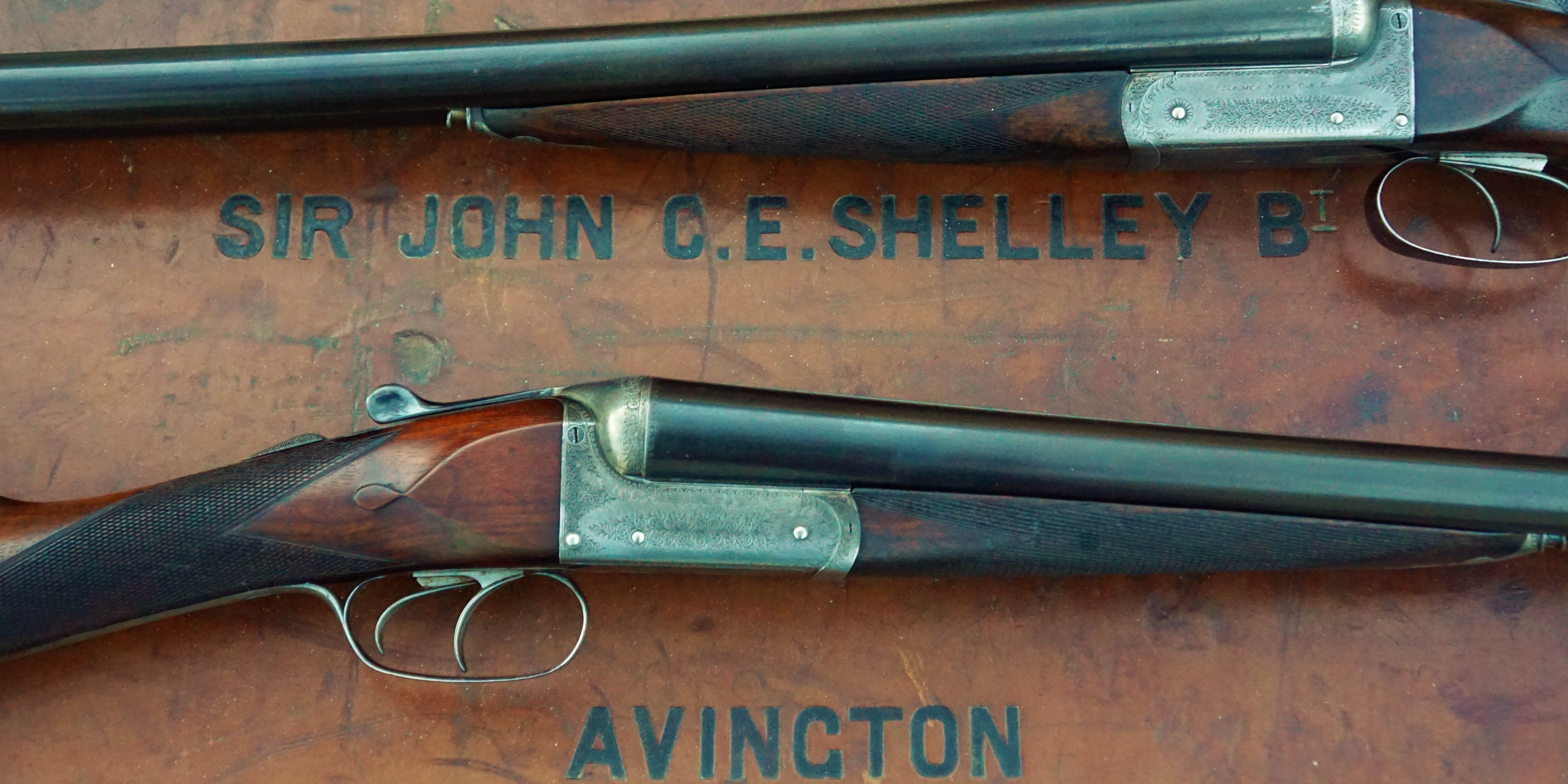Sir John Courtdown Edward Shelley-Rolls’ Cased Pair (Army Navy)

A matched pair of Army Navy boxlock ejectors built for Sir John Courtdown Edward Shelley (later Shelley-Rolls, 1871-1951). No. 1 has 27 1/2″ barrels with 2 1/2″ chambers, choked .003/.005 (about skeet and skeet). No. 2 has 30″ barrels and 2 1/2″ chambers, choked .000/.041 (true cylinder and full). These guns have intercepting sears, and the actions feature acanthus scroll engraving. The fore-ends have Anson push-button releases. The stocks measure 1 ½” x 2 1/8” x 14 5/8” with cast off, and guns weigh, respectively, 6 lbs 5 oz and 6 lbs 7 oz.
Sir John was the great nephew of the poet Percy Bysshe Shelley. He became the sixth Baronet of Castle Goring, Sussex. After he married into the Rolls family he took the hyphenated last name Shelley-Rolls in compliance with the will of his father-in-law, Lord Llangattock. (His brother-in-law, Charles Rolls, founded Rolls Royce.) Sir John was fond of shooting, and was a regular participant in the shooting parties around the turn of the century. His father-in-law, Lord Llangattock, hosted many such shoots at “The Hendre,” the family estate in Monmouthshire. In 1900, the Duke and Duchess of York (later King George V and Queen Mary), visited the estate.
Lord Llangattock was a prominent member of the Anti-Vivisection Society, a position that caused some controversy as illustrated by the following letter of 18 May 1901 (published in the Journal of the British Medical Association):
“SIR,-I see that Lord Llangattock, who presided at the annual meeting of the Antivivisection Society on 9 May, gave credence to ‘the horrible stories of what takes place in the laboratories of physiology,’ denounced vivisection as ‘misleading, immoral, and degrading,’ and professed ‘a sentiment for animals.’ Now, I recollect reading in the newspapers last autumn a description of a battue on a large scale, given by Lord Llangattock at his place in Wales, at which a phenomenal number of pheasants were shot for the recreation of Lord Llangattock and his friends, and I should like him to study this little picture of his own dealings with animals, for which he has ‘a sentiment’ drawn not by a vivisector, but by a man who is a keen and trustworthy observer, and who is in genuine sympathy with all senitient beings.”
Whether or not Lord Llangattock or Sir John paid the letter any heed, it is certain that this pair of boxlocks made a robust contribution to the “phenomenal number of pheasants” killed on the estate.











